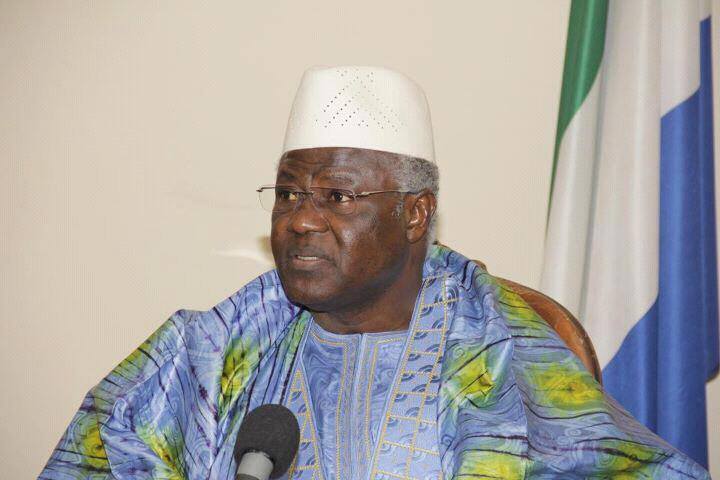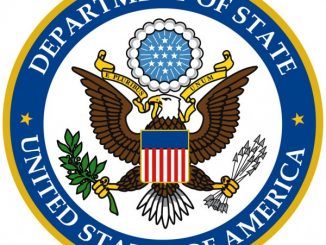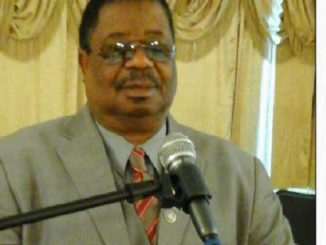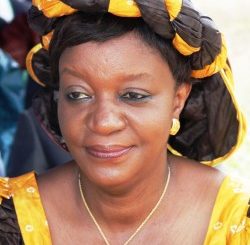
Saturday 29 July 2017, in Makeni City, Bombali District – President Ernest Bai Koroma of Sierra Leone pronounced the rebirth of one more region [Northwest], two more districts [Karene and Falaba] and 49 more chiefdoms [see footnote] in what he referred to as “correcting historical wrongs” in Sierra Leone. This is against the backdrop of the Berlin Conference [1884-5] outcomes. Before then, the whole of pre-colonial Africa was made up of few empires and kingdoms until that action of the partitionists that divided Africa and subsequently created chiefdoms.
President Koroma said, “The redistricting of the country, the creation of a new region and the rebirth of 49 chiefdoms will lead to new structures of local government that will kick-start the administration of new districts and new chiefdoms.” One concerned citizen commented “We have heard of born again Christians, but born again chiefdoms?
But the President said, “In the beginning following the partition of Africa, the colonialists had established 217 chiefdoms and 13 districts in the first place.” Indeed, amalgamation of these chiefdoms resulted into 147 chiefdoms chiefly because of economic, social and political reasons to the annoyance of some chiefs according to the post-civil war truth and reconciliation report.
And President Koroma held firmly to this argument that “the amalgam of chiefdoms were meant to cut corners in colonial administration which resulted in the creation of hard to reach chiefdoms administratively to the annoyance and disenchantment of disadvantaged silent protester-populations in some amalgamated chiefdoms.”
The President argued compellingly that: “Amalgamation of chiefdoms caused tensions and discords amongst people which was manifested during the war when brothers of the same chieftains settled scores in the most brutal ways against themselves because of these chiefdoms discords and disagreements that existed.”
He continued that, “This is the continuation of the peace process: It will deepen the peace process; it will remove tension amongst our people and it will create new hope and good neighbourliness. We have been called the most peaceful country in the region and we must secure that accolade by doing all the things that will safeguard that legacy”
Many members of the now spellbound audience, in the beginning, were apprehensive of what the Ministry of Local Government and Rural Development of Sierra Leone referred to as ‘De-amalgamation’ process. But when President Koroma stated that, “The reason is about going forward in a sustainable manner by creating an ease of reaching far-flung communities administratively aimed at enhancing poverty alleviation in Sierra Leone,” it was loudly applauded by them.
President Koroma explained that he considers de-amalgamation and the rebirth of chiefdoms as one of the most important steps in his presidency. “It is as important as infrastructure – it’s the software of development because it is an invisible development unlike infrastructure”, he stated.
The President painstakingly explained that his government implemented the immediate needs such as infrastructure, healthcare, energy, education and agriculture in his reign of office. But for a development initiative such as de-amalgamation, “we needed to develop the foundation for it”. He further explained, “there were those even in my cabinet who were vehemently opposed to the initiative, but I took my time to convince them before setting up the implementation committee.”
In addressing the chiefs most affected by de-amalgamation, the President stated, “Some affected chiefs thought their powers would be removed from them and were vehement in their protest”.
But as the years rolled by, the same chiefs complained that development was not reaching their people in distant sections of their chiefdoms. To which the President responded then “de-amalgamation will solve your problems before they understood the reasoning behind the policy.”
Indeed, the development partners in Sierra Leone including World Bank, DFID, UNDP as well as some renowned social commentators and political pundits are also in agreement with the President that de-amalgamation will increase development, improve reachability to far-flung chiefdoms, enhance the deliverance of social democracy, promote good governance and democracy as well as deepen decentralization and devolution of resources in the country. “Dividing Koinadugu will improve development penetration in Karene, Mongor etc.”, the President stated.
Under the Republican Constitution of 1971 the Government of Sierra Leone saw the need to increase the 147 amalgamated chiefdoms by two more chiefdoms that resulted into the present 149 existing chiefdoms. Now, with de-amalgamation, the chiefdoms have been increased to 190 with the 49 rebirth chiefdoms.
The President stated “today is the end of the process of de-amalgamation and the rebirth of new chiefdoms. I will appoint regent chiefs in these rebirth chiefdoms who will look after them until we conduct elections.” The President warned that the appointment of the regent chiefs is not forever and that the regent chiefs should be ready for that time when the tribal authorities would elect their substantive chiefs.
In summary, the president informed the paramount chiefs present in Makeni that the process is the beginning of entrusting them with the responsibility of self-determination, freedom and self-administration of their people in the deliverance of social democracy to them; that they will be responsible to watch the healthcare, education, teenage pregnancy etc. of their people at the end of it all. The most profound cautionary statement by the President was that “looking back at negative deeds and settling scores will cloud our focus going forward with our development process”.




